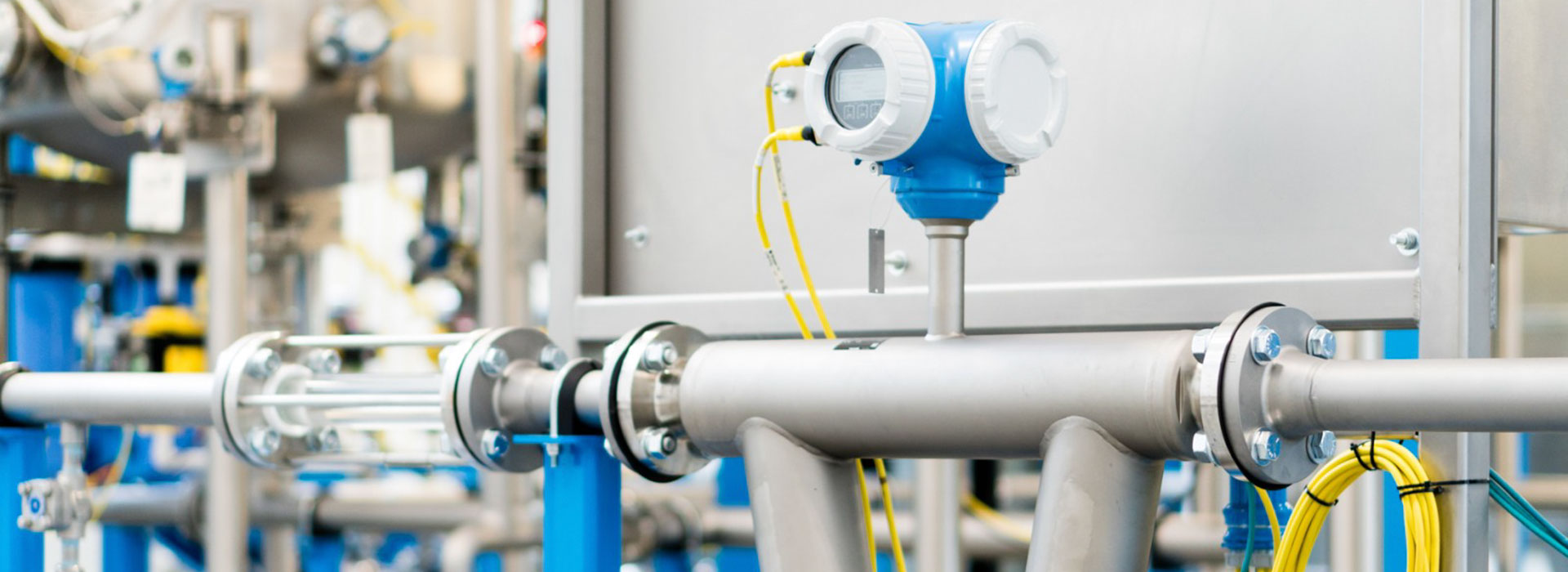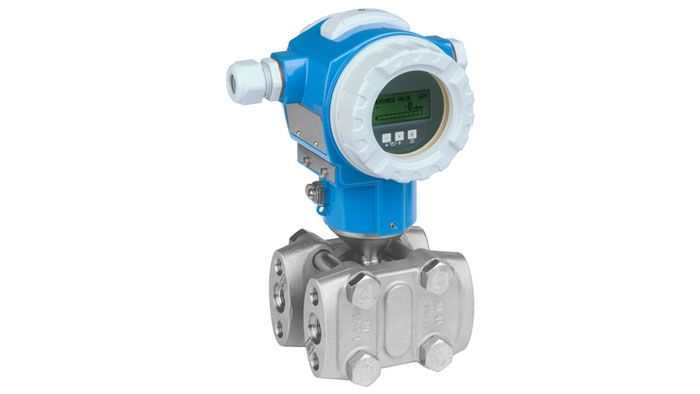Flow Measurement
Flow measurement for liquids, gases and steam
Consistent product quality, safety, process optimization and environmental protection – these are only a few reasons why industrial flow measurement is becoming more important all the time. water, natural gas, steam, mineral oil, chemicals are some of the fluids that have to be measured day in, day out. There is no single, across-the-board technology suitable for all these applications, so you can choose the flowmeter best suited to your process needs from our comprehensive product basket.
Benefits
- From the communication-capable single measuring point to the complete solution for higher-level control systems: you can always rely on the fact that we customize our products to your process requirements.
- Together with automated process control and state-of-the-art communication interfaces (fieldbus systems), flow metering has advanced into more and more new fields of application in recent years.
- You can choose among various measuring principles – electromagnetic measuring of volume flow, mass flow based on either the coriolis or thermal principle, measuring of volume flow based on the vortex or ultrasonic principle
Coriolis mass flowmeters
Coriolis flow measurement: Simultaneous measurement of mass flow, density, temperature and viscosity
The Coriolis measuring principle is used in a wide range of different branches of industry, such as the life sciences, chemicals, petrochemicals, oil and gas, food, and – no less importantly – in custody transfer applications. Coriolis flowmeters can measure virtually all fluids: cleaning agents, solvents, fuels, crude oil, vegetable oils, animal fats, latex, silicon oils, alcohol, fruit solutions, toothpaste, vinegar, ketchup, mayonnaise, gases or liquefied gases.
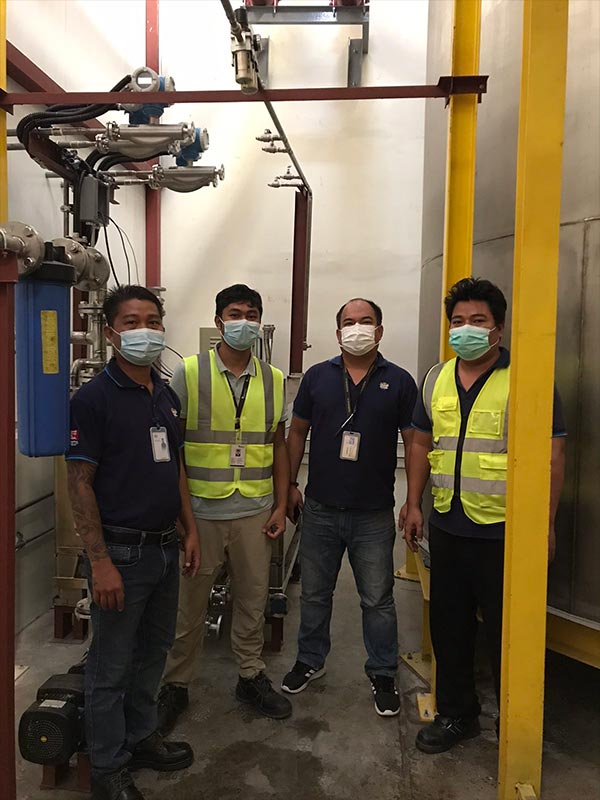
Installation at Blending Line
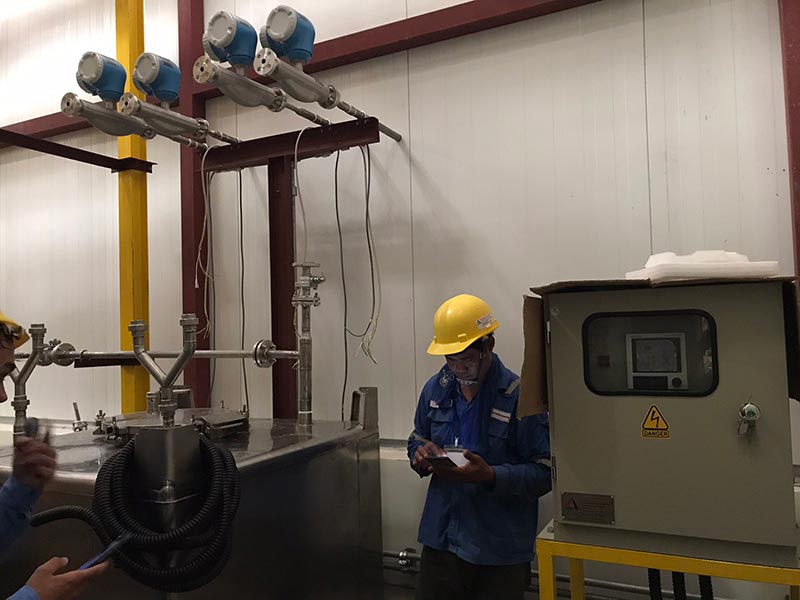
Data Manager RSG35
Coriolis flow measuring principle
Each Coriolis flowmeter has one or more measuring tubes which an exciter causes to oscillate artificially. As soon as the fluid starts to flow in the measuring tube, additional twisting is imposed on this oscillation due to the fluid‘s inertia. Two sensors detect this change of the tube oscillation in time and space as the “phase difference.” This difference is a direct measure of the mass flow.
In addition, the fluid density can also be determined from the oscillation frequency of the measuring tubes. The temperature of the measuring tube is also registered to compensate thermal influences. The process temperature derived from this is available as an additional output signal.
Benefits
- Universal measuring principle for liquids and gases
- Multivariable measurement – simultaneous measuring of mass flow, density, temperature and viscosity
- High measuring accuracy: typically ±0.1% o.r., optionally: ±0.05% o.r. (PremiumCal)
- Measuring principle independent of the physical fluid properties and the flow profile
- No inlet/outlet runs necessary
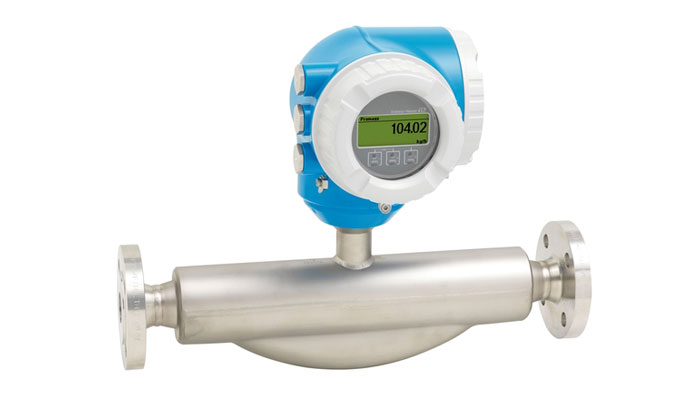
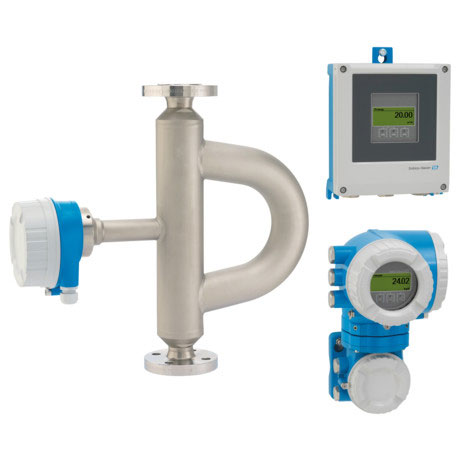
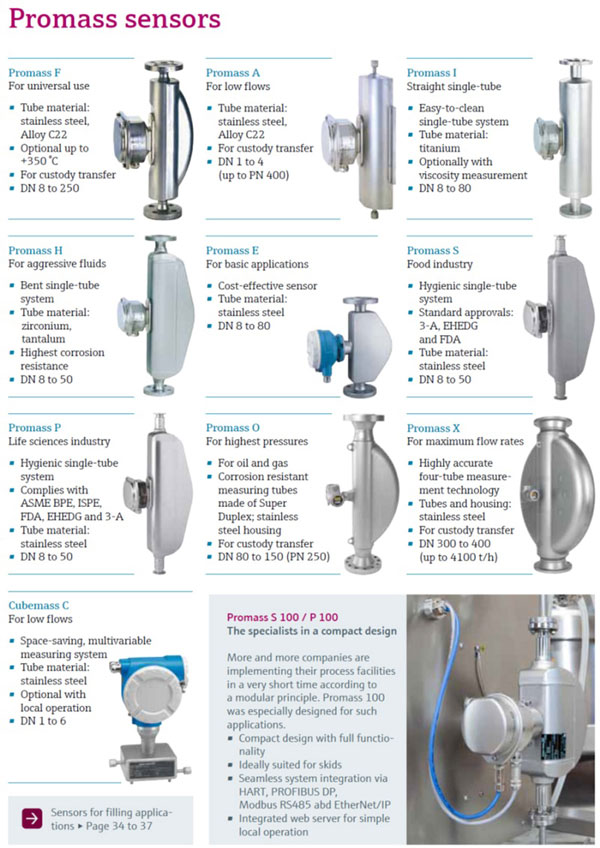
Electromagnetic flowmeters
Proven flow measuring technology for all electrically conductive liquids in every industry
Electromagnetic flowmeters have been used throughout industries for more than 60 years. These meters are applicable for all conductive liquids, such as water, acids, alkalis, slurries and many others. Typical applications are monitoring of liquids, filling, dosing and precise measurement in custody transfer. The two million magmeters we’ve sold since 1977 need no maintenance and offer seamless system integration into your processes.
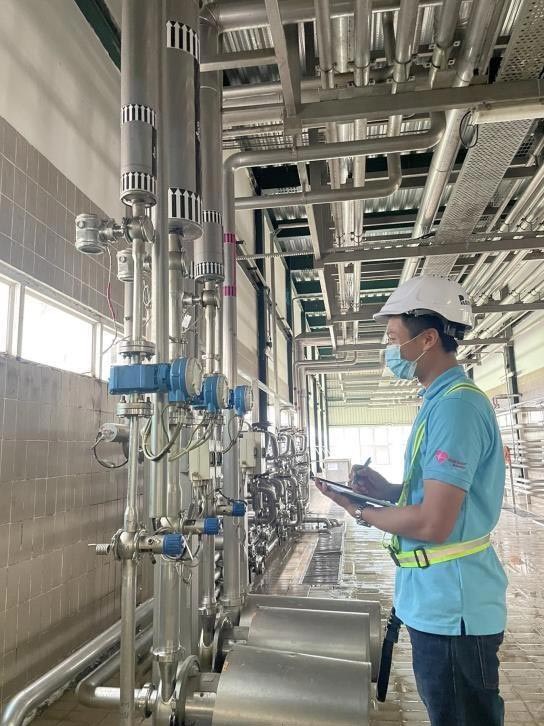
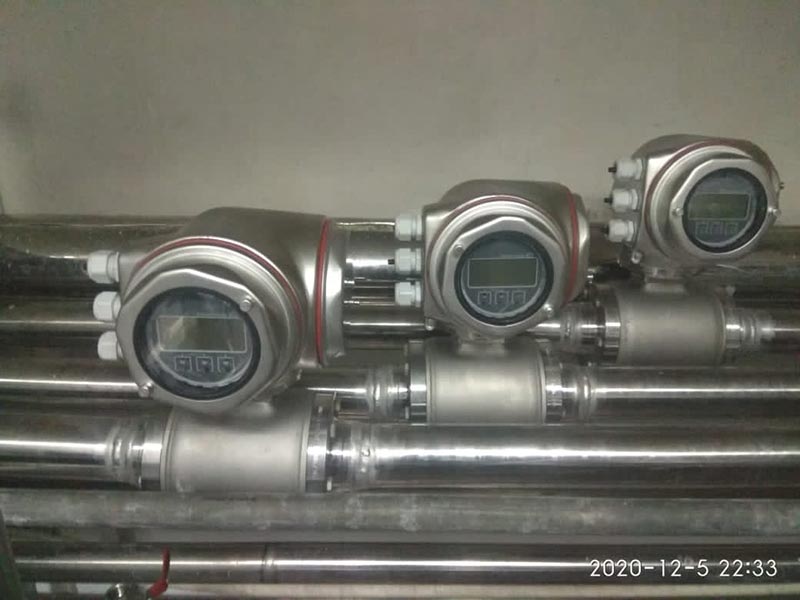
Electromagnetic flow measuring principle
Faraday’s law of induction states that a metal rod moving in a magnetic field induces electrical voltage. This dynamo principle also governs the way electromagnetic flowmeters work.
As soon as the electrically charged particles of a fluid cross the artificial magnetic field generated by two field coils, an electric voltage is induced. This voltage, tapped by two measuring electrodes, is directly proportional to the velocity of flow and thus to the flow volume.
The magnetic field is generated by a pulsed direct current with alternating polarity. This ensures a stable zero point and makes the flow measurement insensitive to multiphase or inhomogeneous liquids, as well as low conductivity.
Benefits
- The measuring principle is virtually independent of pressure, density, temperature and viscosity
- Even fluids with entrained solids can be metered, e.g. ore slurry or cellulose pulp
- Wide range of nominal diameters (DN 2 to 2400; 1/12 to 90″)
- Free pipe cross-section: CIP/SIP cleanable, piggable
- No moving parts, maintenance-free
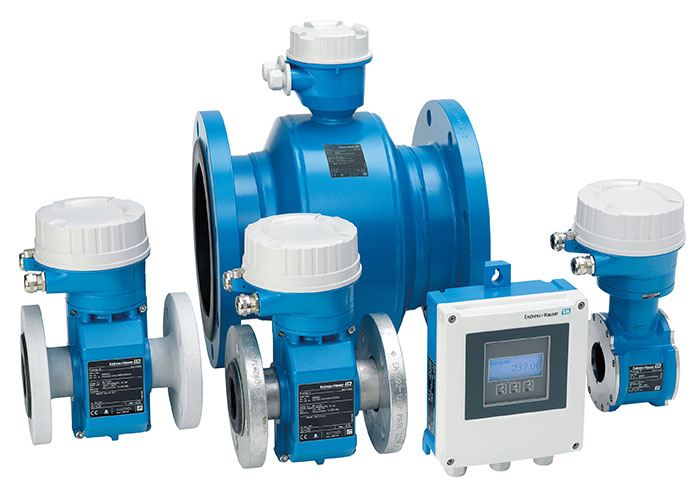
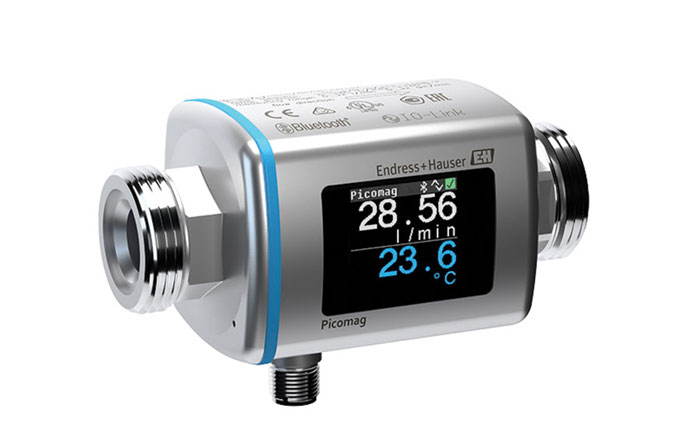
Ultrasonic flowmeters
Versatile and economical flow measurement of gases and liquids up to a nominal diameter DN 4000
Using ultrasonic waves, the flow volume of a wide variety of gases and liquids can be measured reliably – independent of electrical conductivity, pressure, temperature or viscosity.
In applications that require traceable and guaranteed accuracy, inline ultrasonic sensors are preferred for use. Clamp-on ultrasonic sensors, on the other hand, are installed on the outer wall of the pipe and thus also enable temporary measurements or a retrofitting.
Ultrasonic flow measuring principle
Swimming against the flow requires more power and more time than swimming with the flow. This simple fact is the basis for ultrasonic flow measurement according to the “differential transit time” method: This method uses two sensors, set opposite each other in the measuring tube. Each sensor can alternately transmit and receive ultrasonic signals, while simultaneously measuring the signal transit time.
As soon as the fluid in the tube starts to flow, the signals are accelerated in the direction of flow but delayed in the opposite direction. The differential transit time, measured by the two sensors, is directly proportional to the flow rate.
Benefits
- Measurement independent of pressure, density, temperature, conductivity and viscosity (for homogeneous fluids)
- Free pipe cross-section, no pressure loss
- No moving parts, minimum maintenance and upkeep
- Long service life, no abrasion or corrosion from the fluid
- In-line or clamp-on design for stationary or temporary flow measurements
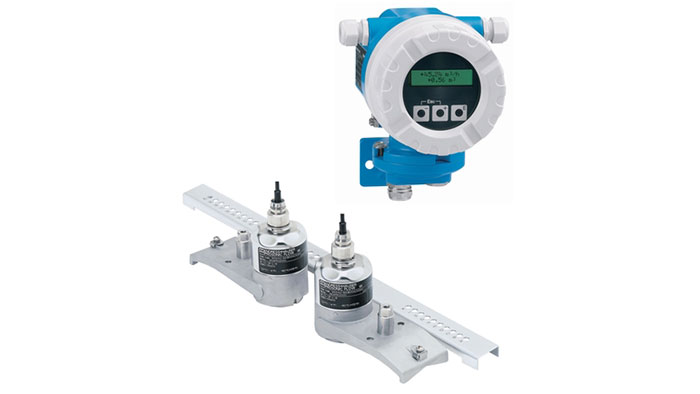
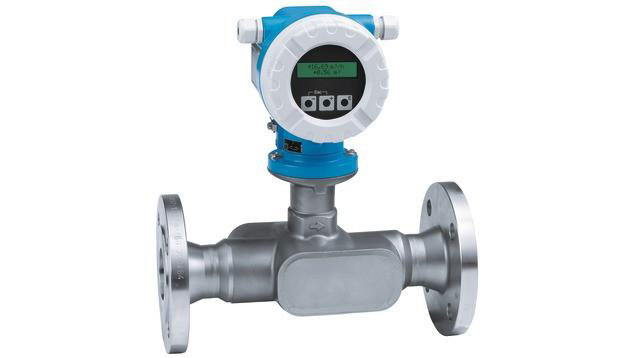
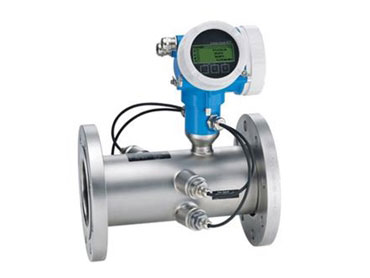
Vortex flowmeters
Vortex flow measurement: Robust and Universally applicable for liquids, gases and steam
Vortex flowmeters are used in numerous branches of industry to measure the volume flow of liquids, gases and steam. Applications in the chemicals and petrochemicals industries, for example, in power generation and heat-supply systems involve widely differing fluids: saturated steam, superheated steam, compressed air, nitrogen, liquefied gases, flue gases, carbon dioxide, fully demineralized water, solvents, heat-transfer oils, boiler feedwater, condensate, etc.
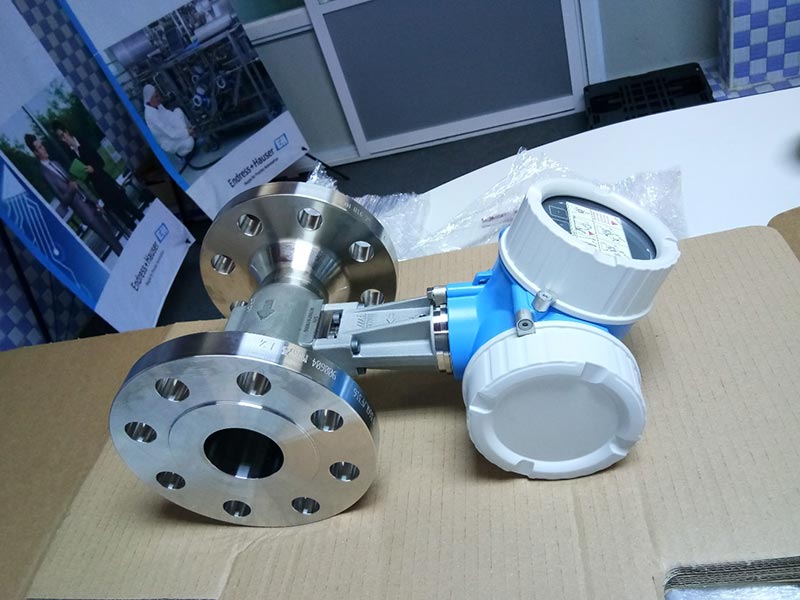
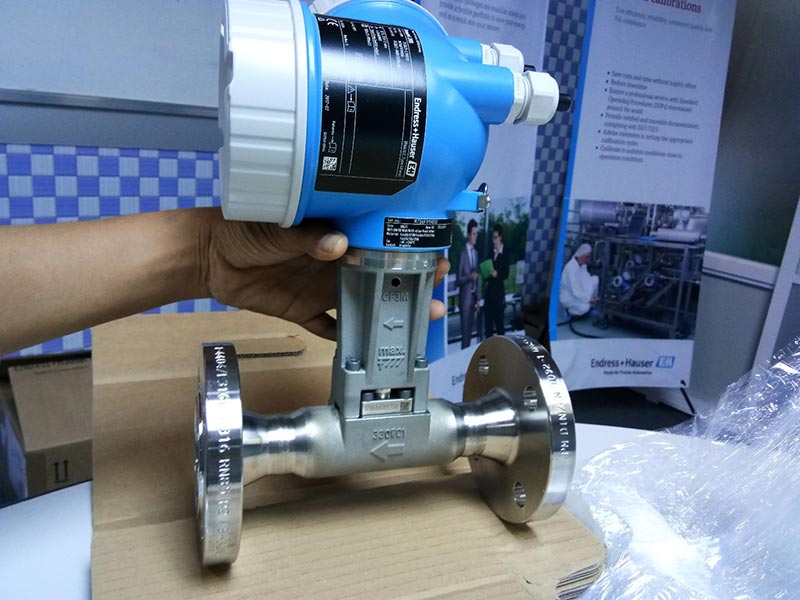
Vortex flow measuring principle
This measuring principle is based on the fact that turbulence forms downstream of obstacles in the flow, such as a bridge pier.
Inside each vortex flowmeter, a bluff body is therefore located in the middle of the pipe. As soon as the flow velocity reaches a certain value, vortices form behind this bluff body, are detached from the flow and transported downstream. The frequency of vortex shedding is directly proportional to mean flow velocity and thus to volume flow.
The detached vortices on both sides of the bluff body generate alternately a local positive or negative pressure that is detected by the capacitive sensor and fed to the electronics as a primary digital, linear signal.
Benefits
- Universally suitable for measuring liquids, gases and steam
- Largely unaffected by changes in pressure, density, temperature and viscosity
- High long-term stability: no zero-point drift and lifetime K-factor
- Large turndown of typically 10:1 to 30:1 for gas/steam, or up to 40:1 for liquids
- Wide temperature range: –200 to +400 °C (+450 °C on demand)
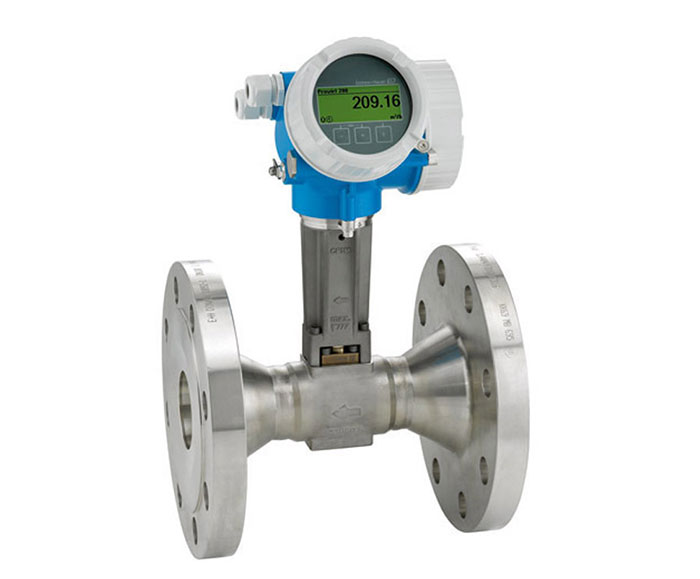
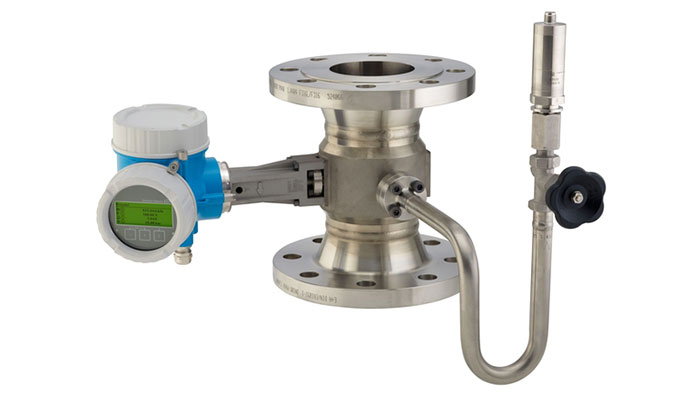
Differential pressure measurement
Continuous level, flow and differential pressure measurement
Differential pressure transmitters with piezoresistive pressure sensors and welded metallic membrane or electronic dp or diaphragm seal is used mostly in the process industry. Deltabar offers continuous level measurement in liquids as well as volume or mass flow measurement using primary elements. It is also possible to do filter monitoring with the differential pressure transmitter. Check out the broad range of Deltabar devices and click on the button below.
Differential pressure measurement: Measuring Principle
Silicon cell: The operating pressure deflects the process isolating diaphragm and a fill fluid transfers the pressure to a resistance bridge (semiconductor technology). The pressure-dependent change in the bridge output voltage is measured and evaluated.
Diaphragm seal: The operating pressure acts on the process isolating diaphragm of the diaphragm seal and is transferred to the process isolating diaphragm of the sensor by a fill fluid.
Primary elements: contact your local Sales Center
Benefits
- Universal dp transmitter for flow, level or filter applications
- With diaphragm seal process temperatures from -70 up to +400°C (-94 to +752°F)
- The electronic differential pressure system eliminates traditional mechanical issues resulting in greater process availability and reliability. Also safety risks are minimized with the electronic dp system architecture and design
Thermal mass flowmeters
Thermal meters: For direct mass measurement of industrial gases, compressed air and aqueous fluids
Whenever high turndown or low pressure losses are important in gas metering applications in any industry, thermal mass flowmeters offer a real alternative to traditional measuring techniques – whether for process control, consumption and supply monitoring, detecting leaks or monitoring distribution networks. Using insertion versions, it is also possible to measure gas flows in very large pipelines or in rectangular ducts.
Thermal flow measuring principle
This measuring principle is based on the fact that heat is drawn from a heated body when a fluid flows past.
A thermal flowmeter contains two PT100 temperature sensors for this purpose. One sensor measures the current fluid temperature as a reference. The second sensor is heated and has a constant temperature differential relative to the first sensor at “zero flow.”
As soon as the fluid begins to flow in the measuring tube, the heated temperature sensor cools off due to the fluid flowing past – the higher the flow velocity, the greater the cooling effect. The electric current required to maintain the temperature differential is thus a direct measure of mass flow.
Benefits
- Multivariable – direct measurement and display of mass flow and fluid temperature
- No pressure or temperature compensation required
- High turndown (100:1)
- Excellent low-end sensitivity
- Quick reaction to fluctuations in flow


